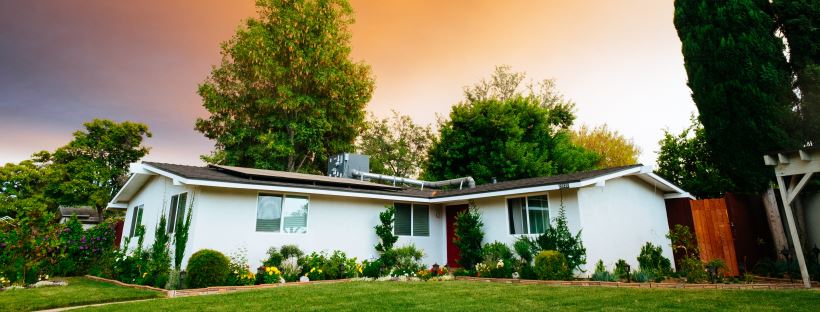Refinancing a Mortgage – Why and How to Refi

The simplest way to understand what refinancing a mortgage means is just to think of it as getting a mortgage, again. You’ll rate shop for the lowest interest rate, you’ll compare Loan Estimates, you’ll choose the term, go through the underwriting process, and pay fees. The big difference is that when you’re buying a home you use the money you’re loaned to buy a house. With mortgage refinancing, you use the money you’re loaned to pay off your existing mortgage. You borrow money, pay off your existing mortgage, and now you have a new mortgage on the home.
So why would you go to all that trouble? There are a number of reasons, but the most common include:
You might refinance to get a better interest rate
Your credit may have improved significantly, mortgage rates generally may have dropped since you first bought the home, or both. One of the best reasons to refinance is that you think you can get a meaningfully lower interest rate with a new, refinanced, mortgage. Lower interest rates would mean lower monthly payments and less interest paid in total over the total term of the mortgage, if all else is equal (for example if you had a 30 year mortgage, made payments on it for 5 years, you should refinance for 25 years, to match the term of what you had left on your initial mortgage to your new mortgage).
You might refinance to swap an adjustable rate mortgage for a fixed rate mortgage
Your initial mortgage may have been an adjustable rate because you thought you wouldn’t live there for more than 5-7 years, but now your plans have changed. Before the variable rate adjustment kicks in you’d like to lock in a rate so your payments are predictable and steady. Refinancing can swap out your adjustable rate mortgage for a new fixed rate mortgage.
You might refinance to take money out of your home
Often called a “cash-out” refinance, this can be an option if you have significant equity in your home (meaning you owe much less on the mortgage than the home is worth.) In a cash-out refinance you take out a new, refinancing mortgage for more than you owe on the old mortgage, and the difference in the two is paid out to you in cash. This combines refinancing with taking out a home equity line of credit, in one transaction. This is often done to pay for upgrades or renovations to the home that the homeowner thinks will add even more value to the home.
You might refinance to avoid, or get rid of, a less desirable feature of your existing mortgage
For example, a balloon payment may be on the horizon, and refinancing for a fixed rate traditional mortgage would allow you to avoid that. FHA loans require FHA mortgage insurance, similar to PMI except it is paid for the life of the loan, it isn’t removed when loan to value ratio hits 78%. To get rid of FHA mortgage insurance payments, some people refinance to swap their FHA loan for a traditional mortgage.
You may be thinking “why wouldn’t I refinance whenever I can improve my mortgage then?” It’s a good question, and the answer is simple:
It costs quite a bit to refinance.
Refinancing costs are estimated to be roughly 3% to 6% of the principal (the amount borrowed) so you would have to be saving quite a bit of money to make it worthwhile. There are online calculators available from most mortgage providers to help you understand what you stand to save by refinancing. The important thing to understand is that the savings build up over time. There is a total amount you would save over the entire term of the new mortgage, but you don’t get that all at once. You save a little bit (or if you’re lucky, a lot) every month. The “break even” point is the date in the future where what you’ve saved will equal what it cost to refinance. If you think you’ll be in the house past that break-even point, it can be a good idea to refinance. If you think you’re likely to move and sell the house before that point, you will be paying more to refinance than you’ll be around to save.
As we mentioned, the process for refinancing is basically the same as applying for the original mortgage. You should keep in mind a few things that are different. First, make sure you know if there is a pre-payment penalty for your existing mortgage. A pre-payment penalty is a fee you’ll have to pay if you pay off your mortgage ahead of schedule. If there is one, you need to include that cost in your calculation to see if the refinance is worth it. You also will want to check if there is any limitation on when you can refinance. Some mortgages require 12-24 months after the mortgage is originated (when you first borrow) before you can refinance. Finally, it may be easier to refinance with your original mortgage company than with competitors. You’ll still definitely want to shop around and compare Loan Estimates, but since you’ve already been through the process once with your original mortgage lender, they may be able to offer lower fees or slightly better rates. It’s worth asking about, at the very least.